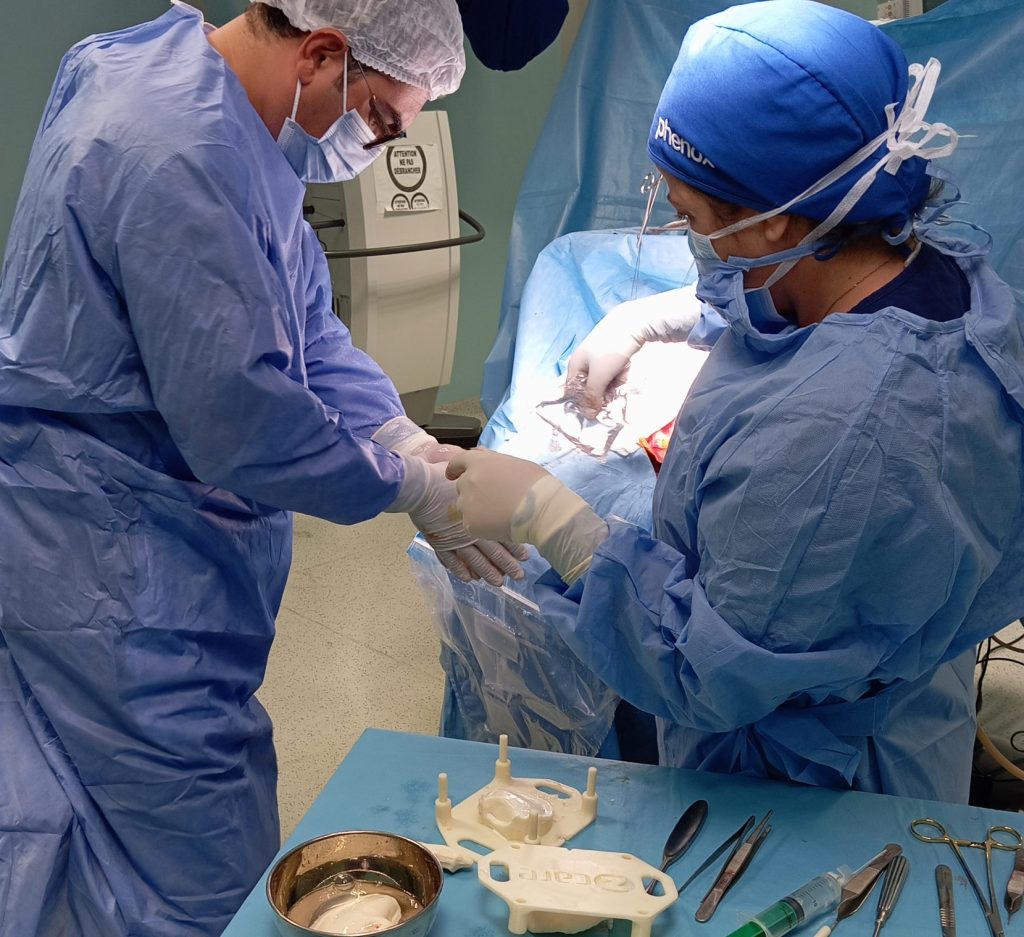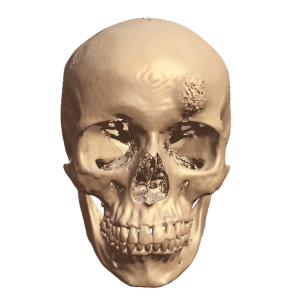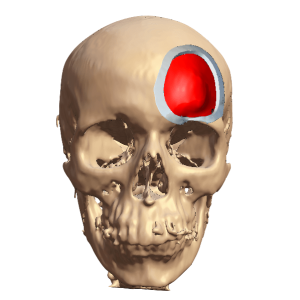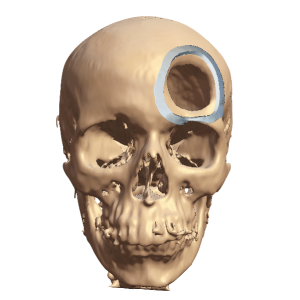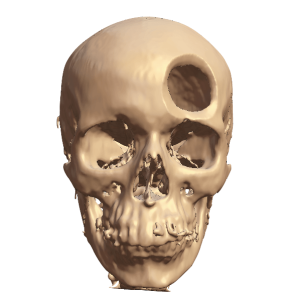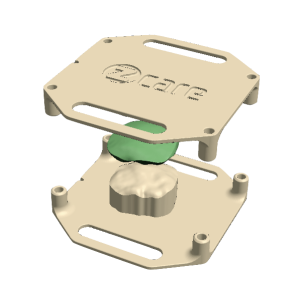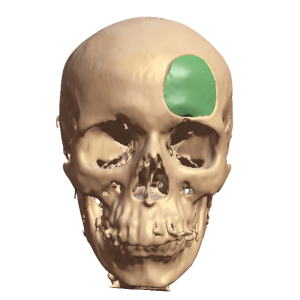SKULL GUIDE
Synergy of Aesthetics and Challenges
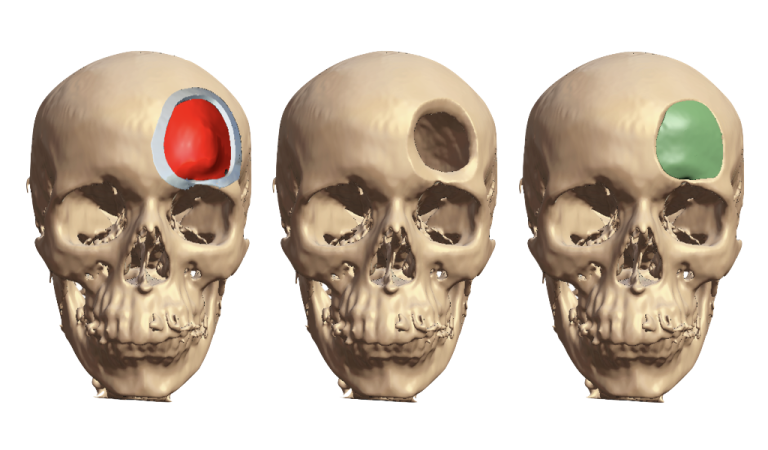
We redefine cranial reconstruction by integrating groundbreaking technology and unmatched expertise. Our Custom-Made Cranial Implants, coupled with innovative Custom Resection Guides, deliver exceptional results that go beyond expectations. Here’s why our solution stands out
Why Choose Patient Specific?
Embrace a risk-free transformation. With our patient-specific solutions, surgeons have nothing to lose and everything to gain.
1. Customization and Precision:
- Personalized Implants: 3D printing allows for the creation of highly personalized cranial implants tailored to the patient’s exact specifications. Surgeons can design implants that perfectly fit the patient’s skull, ensuring optimal aesthetics and functionality.
- Accurate Replication: 3D printing technology can replicate intricate details of the patient’s skull, ensuring a precise fit and reducing the risk of complications post-surgery.
2. Material Selection:
- Variety of Materials: 3D printing technology enables the use of various materials, including biocompatible polymers, metals, and ceramics. Surgeons can choose materials based on factors such as durability, biocompatibility, and patient-specific needs.
3. Reduced Surgery Time and Risk:
- Faster Surgical Procedures: The use of 3D printed implants reduces surgery time as the implant fits perfectly without the need for extensive adjustments during the operation.
- Minimized Infection Risk: Custom-fit implants reduce the risk of infections and complications, as they precisely cover the affected area without gaps or uneven surfaces.
4. Patient-Specific 3D Models:
Preoperative Planning: Surgeons use 3D printed models of the patient’s skull for detailed preoperative planning. These models help visualize the surgical site, allowing surgeons to practice the procedure and enhance their understanding of the unique anatomy.
5. Complex Cranial Defects:
- Addressing Complex Cases: 3D printing technology is particularly beneficial for complex cranial defects where traditional off-the-shelf implants might not be suitable. It offers a tailored solution for patients with intricate cranial anomalies.
6. Postoperative Outcomes:
- Improved Patient Satisfaction: Custom-fit implants enhance the aesthetic outcome of the surgery, leading to increased patient satisfaction and improved quality of life.
- Reduced Complications: The precision of 3D printed implants reduces the likelihood of complications such as implant displacement or discomfort, leading to better long-term outcomes.
7. Research and Development:
- Advancing Research: 3D printing in cranioplasty has opened avenues for research and development, leading to continuous improvements in implant design, materials, and surgical techniques.
8. Collaboration Between Surgeons and Engineers:
- Collaborative Approach: Surgeons collaborate closely with engineers and 3D printing experts to design implants that meet both medical and technical requirements. This interdisciplinary approach ensures the highest quality of customized implants.
Please note that the specific advancements and applications of 3D printing technology in cranioplasty may vary, and it’s advisable to consult with medical professionals and experts in the field for the most recent and specialized information.
Cranioplasty Steps
Instant Appointment With Expert
Schedule an Appointment with one of our expert: Begin your journey with our services by booking an appointment with one of our expert. Explore how our solutions can revolutionize your practice and enhance surgical precision. Your personalized consultation awaits
